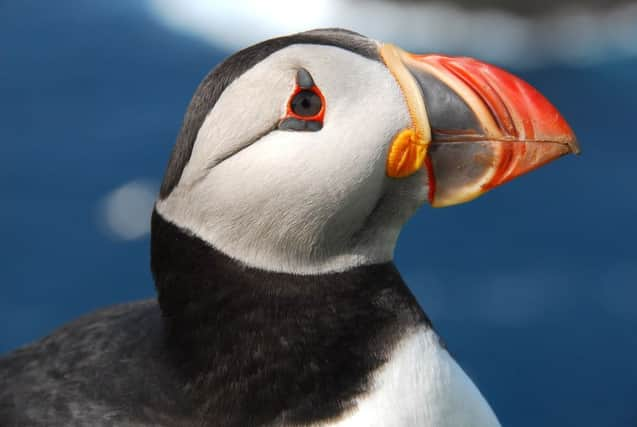Scottish seabird numbers rise despite poor summer


Its nature reserves recorded healthy numbers of chicks fledging their nests amid the unusually wet summer, which it said was an encouraging sign particularly as many Scottish seabird populations had been in chronic decline over the past few years.
Guillemot numbers on Tiree grew from 2,068 in 2014 to 2,634 this year, and the number of kittiwake nests at Troup Head in Aberdeenshire increased from 395 to 414 during the same period.
Advertisement
Hide AdAdvertisement
Hide AdAt Fidra in the Firth of Forth, there were 1,026 active puffin burrows, up from around 800 in 2009, while the kittiwakes at Fowlsheugh in the north east fledged 545 chicks.
Despite the positive numbers in these locations, the charity said an area of concern remains in Shetland and Orkney were seabird levels have continued to struggle. Only 570 kittiwake pairs were recorded this year at Marwick Head on Orkney - a decline of 90 per cent since 1999.
Guillemot numbers at Marwick Head also dropped from 34,679 to 8,645 over the same period, and while 668 puffins were observed at Sumburgh Head only around a third of nests there fledged any chicks, suggesting some 400 nests failed.
The RSPB has attributed the difference between the Northern Isles and other parts of Scotland to food availability and has advocated the need for properly protected areas at sea.
Phil Taylor, RSPB Scotland marine policy officer, said: “Scotland has already designated more Marine Protected Areas than any other part of the British Isles, and RSPB Scotland has worked hard to make sure these include protection for black guillemots and sandeels.
“But clearly, though our seabirds can cope with wet summers, they struggle without healthy seas to feed in.
“The Scottish Government could help solve this as they have already identified 14 potential Special Protection Areas, which are internationally important parts of our sea, but are dragging their feet when it comes to designating them.
“For most of Scotland, 2015 has been a welcome reprieve from years of chronic seabird decline.
Advertisement
Hide AdAdvertisement
Hide Ad“However, we’re not out of the woods yet. Despite this great news we’ve still lost two thirds of our kittiwakes, Arctic skua and Arctic terns since 2000.
“The best time to take action was 20 years ago, the second best time is now.”